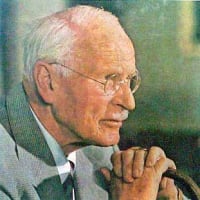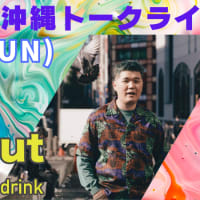
魂が求めているのは、あなたの愚かさであって、あなたの知恵ではない。
~ カール・ユング、赤い本、264ページ
外側の冒険が自分に起こらないなら、内側の冒険も自分に起こらない。
~ カール・ユング『レッド・ブック』263ページ
もう一人の初期の心理療法の巨人、イタリア人のロベルト・アサギオリは、ライフコースにおけるスピリチュアリティを彼の治療法の主要な部分とした。アサギオーリは、ユングと同様に、人生の目的の探求は、人が十分に長く生き、十分な失敗をして、未検証の人生はどこにも行かないことを認識してから始められると考えています。
~ ハリー・ムーディ&デビッド・キャロル著「魂の5つのステージ」より引用
Գոհար Մնացականյան分析的心理学。理論と実践
The soul demands your folly; not your wisdom.
~ Carl Jung, The Red Book, Page 264
If no outer adventure happens to you, then no inner adventure happens to you either.
~ Carl Jung, The Red Book, Page 263
Another early giant of psychotherapy, the Italian Roberto Assagioli, made spirituality in the life course a dominant part of his therapeutic method. Like Jung, Assagioli believes that the search for life's purpose can begin only after a person has lived long enough and made enough mistakes to recognize that an unexamined life goes nowhere.
~ Taken from The Five Stages of the Soul, Harry Moody & David Carroll
Գոհար ՄնացականյանAnalytical Psychology: Theory and Practice
個性化の実際のプロセス、つまり自分の内なる中心(心的核)や自己と意識的に折り合いをつけることは、一般的に、人格の傷とそれに伴う苦しみから始まります。
この最初の衝撃は、ある種の「呼びかけ」に相当しますが、そのように認識されることはあまりありません。
それどころか、自我は自分の意志や願望が妨げられていると感じ、その障害を外部の何かに投影します。つまり、エゴは神や経済状況、上司や結婚相手に、自分を妨げている何かの原因があると非難するのです。
あるいは、外見上は何も問題がないように見えても、水面下ではすべてが無意味で空虚に見える致命的な退屈さに悩まされているのかもしれません。
- マリー=ルイーズ・フォン・フランツ『人間とその象徴』166ページ。
個人の人生における最初の危機においても、それはまったく同じである。人は、見つけることができないか、何も知らない何かを求めている。そのような時には、責任感を持とうとか、休暇を取ろうとか、あまり働かないように(あるいはもっと働こう)とか、人との接触を増やそうとか(あるいは減らそう)とか、趣味を持とうとか、良かれと思ってした賢明なアドバイスは全く役に立たない。どれも役に立たないし、せいぜい稀にしか役に立たない。
唯一、効果があると思われることがあります。それは、偏見を持たずに、全くの素朴な気持ちで、迫り来る闇に直接向き合い、その秘密の目的と、あなたに何を求めているのかを探ろうとすることです。
迫り来る闇の隠された目的は、一般的には非常に珍しいものであり、ユニークで予想外のものであるため、原則として無意識から湧き出る夢や空想によってのみ、それが何であるかを知ることができます。
軽率な思い込みや感情的な拒絶をせずに無意識に注意を向ければ、無意識は役に立つ象徴的なイメージの流れの中で突き抜けていくことが多い。しかし、いつもそうとは限りません。
時には無意識が、自分自身や自分の意識的な態度の何が悪いのかという、一連の痛みを伴う気づきを最初に提供してくれる。
その場合、人はあらゆる種類の苦い真実を飲み込むことからプロセスを始めなければなりません。
無意識が最初に役立つ形で出てきても、否定的な形で出てきても、時間が経てば、無意識の要素に意識的な態度をよりよく適応させる必要が出てくるので、無意識からの「批判」と思われるものを受け入れることになります。
人は夢を通して、様々な理由であまり見たくなかった自分の人格の側面を知ることになります。
これをユングは "影の実現 "と呼んでいます。
同上、167-168ページ。
絵画 フランソワーズ・ド・フェリーチェ「女性の肖像
The actual process of individuation, the conscious coming-to-terms with one's own inner center (psychic nucleus) or Self, generally begins with a wounding of the personality and the suffering that accompanies it.
This initial shock amounts to a sort of "call," although it is not often recognized as such.
On the contrary, the ego feels hampered in its will or its desire and usually projects the obstruction onto something external. That is, the ego accuses God or the economic situation or the boss or the marriage partner of being responsible for whatever is obstructing it.
Or perhaps everything seems outwardly all right, but beneath the surface a person is suffering from a deadly boredom that makes everything seem meaningless and empty.
- Marie-Louise von Franz, Man and His Symbols, p. 166.
It is exactly the same in the initial crisis in the life of an individual. One is seeking something that is impossible to find or about which nothing is known. In such moments all well-meant, sensible advice is completely useless—advice that urges one to try to be responsible, to take a holiday, not to work so hard (or to work harder), to have more (or less) human contact, or to take up a hobby. None of that helps, or at best only rarely.
There is only one thing that seems to work; and that is to turn directly toward the approaching darkness without prejudice and totally naively, and to try to find out what its secret aim is and what it wants from you.
The hidden purpose of the oncoming darkness is generally something so unusual, so unique and unexpected, that as a rule one can find out what it is only by means of dreams and fantasies welling up from the unconscious.
If one focuses attention on the unconscious without rash assumptions or emotional rejection, it often breaks through in a flow of helpful symbolic images. But not always.
Sometimes it first offers a series of painful realizations of what is wrong with oneself and one's conscious attitudes.
Then one must begin the process by swallowing all sorts of bitter truths.
Whether the unconscious comes up at first in a helpful or a negative form, after a time the need usually arises to readapt the conscious attitude in a better way to the unconscious factors, therefore to accept what seems to be "criticism" from the unconscious.
Through dreams one becomes acquainted with aspects of one's own personality that for various reasons one has preferred not to look at too closely.
This is what Jung called "the realization of the shadow."
Ibid., pp. 167-168.
Painting: Francoise de Felice, Portrait de femme
A
人生の後半になると、人は自分の内面と向き合うようになります。これは一般的な問題である。~カール・ユング『手紙』第2巻、402ページ。
A
質問3.人生の後半,つまり30歳を過ぎてからの神経症の治療は,人生の前半と比べてどのような点で違いがあるのでしょうか?
ユング博士 これもまた、何時間でも議論できる問題です。
私が詳細に説明することは不可能ですが、いくつかのヒントをお伝えすることはできます。
人生の前半、つまり最初の35~36年は、個人が世界に進出する時期だと私は考えています。
それはちょうど天体の爆発のようなもので、その破片は宇宙に飛び出し、ますます遠くまで広がっていきます。
そうして心の地平線が広がり、願望や期待、野心、世界を征服して生きようとする意志が、人生の半ばに至るまでどんどん広がっていくのです。
40年経っても、夢見ていた人生の地位に到達していない人は、簡単に失望の餌食になる。
それゆえ、40年目以降の不況は異常に多い。
それは決定的な瞬間であり、偉大な芸術家(例えばニーチェ)の生産性を研究すると、人生の後半の初めに、彼らの創造性のモードがしばしば変化することがわかります。
例えば、ニーチェは37歳から38歳のときに、それまでのすべての作品とはまったく異なる、彼の傑出した作品である『ツァラトゥストラ』を書き始めました。
それは重要な時期です。人生の後半になると、自分自身に疑問を持つようになります。
というか、そういう質問を避けていたのですが、自分の中の何かが質問してくるのです。
そして次に、"あなたは今どこに向かっているのか?"という声を聞くのが嫌なのです。
若い頃は、ある位置に着くと、"これが私の欲しいものだ "と思うものです。
ゴールは見えているようで見えていません。
人は、「結婚して、こういう地位に就いて、お金をたくさん稼いで、それから何をするかわからない」と考えます。
仮にそれに到達したとすると、次の質問が来る。"で、どうするの?
私たちは本当にこのままずっと同じことを続けることに興味があるのだろうか、それとも以前と同じくらい素晴らしい、あるいは魅力的なゴールを探しているのだろうか」。
その答えは、「この先には何もない」です。
先に何があるのか?
死が待っている」。
それは嫌ですよね。それは最も嫌なことです。
だから、人生の第二部には何の目標もないように見える。
その答えはわかっているはずだ。
太古の昔から、人間はその答えを持っていました。"私たちは前を向いて、明確な終わりに向かって進んでいるのです」。
宗教は、ほら、偉大な宗教は、人生の後半の終わり、ゴールのために人生の後半を準備するためのシステムです。
ある時、私は友人の助けを借りて、私がアンケートの発案者であることを知らない人たちにアンケートを送りました。
私は、"なぜ人は神父に告白する代わりに医者に行くことを好むのか?
という質問を受けたことがありますが、本当に医者がいいのかどうか疑問に思っていたので、一般の人がどう答えるのか知りたかったのです。
たまたまそのアンケートが中国の人の手に渡り、彼の答えは「若い時は医者に、年を取ったら哲学者に」でした。
若い時には、世界を制覇するような大らかな生き方をし、年を取ると反省し始めるという違いです。
自然と自分のしてきたことを考えるようになります。
36歳から40歳の間に、ある瞬間がやってくる(人によってはもう少し時間がかかる)。
何の面白みもない日曜日の朝、教会に行く代わりに、ふと思うのです。
"去年は何をして生きてきたんだろう?
そして夜が明け始めると、たいていは一息ついて、嫌なことだからといって考え続けることはありません。
さて、人生の最初の部分、つまり性的な大冒険を広げることに対する抵抗がありますよね。
若い人たちが、自分の命を危険にさらすことや、社会的なキャリアを積むことに対して抵抗があると、それは集中力や努力が必要だからであり、彼らは神経症になりがちです。
人生の後半では、心の自然な発達、つまり反省や終わりへの準備を妨げている人たちが、神経症になるのである。
A
In the second half of life one should begin to get acquainted with the inner world. That is a general problem. ~Carl Jung, Letters Vol. II, Page 402.
A
Question 3. In what respect, if any, does the treatment of neurosis in the second half of life—that means after thirty—differ from that in the first half of life?
Dr. Jung: This is also a question which you could discuss for several hours.
It is quite impossible for me to go into details; I only can give you a few hints.
The first half of life, which I reckon lasts for the first 35 or 36 years, is the time when the individual usually expands into the world.
It is just like an exploding celestial body, and the fragments travel out into space, covering ever greater distances.
So our mental horizon widens out, and our wishes and expectation, our ambition, our will to conquer the world and live, go on expanding, until you come to the middle of life.
A man who after forty years has not reached that position in life which he had dreamed of is easily the prey of disappointment.
Hence the extraordinary frequency of depressions after the fortieth year.
It is the decisive moment; and when you study the productivity of great artists—for instance, Nietzsche—you find that at the beginning of the second half of life their modes of creativeness often change.
For instance, Nietzsche began to write Zarathustra, which is his outstanding work, quite different from everything he did before and after, when he was between 37 and 38.
That is the critical time. In the second part of life you begin to question yourself.
Or rather, you don’t; you avoid such questions, but something in yourself asks them, and you do not like to hear that voice asking “What is the goal?”
And next, “Where are you going now?”
When you are young you think, when you get to a certain position, “This is the thing I want.”
The goal seems to be quite visible.
People think, “I am going to marry, and then I shall get into such and such a position, and then I shall make a lot of money, and then I don’t know what.”
Suppose they have reached it; then comes another question: “And now what?
Are we really interested in going on like this forever, for ever doing the same thing, or are we looking for a goal as splendid or as fascinating as we had it before?”
Then the answer is: “Well, there is nothing ahead.
What is there ahead?
Death is ahead.”
That is disagreeable, you see; that is most disagreeable.
So it looks as if the second part of life has no goal whatever.
Now you know the answer to that.
From time immemorial man has had the answer: “Well, death is a goal; we are looking forward, we are working forward to a definite end.”
The religions, you see, the great religions, are systems for preparing the second half of life for the end, the goal, of the second part of life.
Once, through the help of friends, I sent a questionnaire to people who did not know that I was the originator of the questionnaire.
I had been asked the question, “Why do people prefer to go to the doctor instead of to the priest for confession?”
Now I doubted whether it was really true that people prefer a doctor, and I wanted to know what the general public was going to say.
By chance that questionnaire came into the hands of a Chinaman, and his answer was, “When I am young I go to the doctor, and when I am old I go to the philosopher.”
You see, that characterizes the difference: when you are young, you live expansively, you conquer the world; and when you grow old, you begin to reflect.
You naturally begin to think of what you have done.
There a moment comes, between 36 and 40—certain people take a bit longer—when perhaps, on an uninteresting Sunday morning, instead of going to church, you suddenly think, “Now what have I lived last year?” or something like that; and then it begins to dawn, and usually you catch your breath and don’t go on thinking because it is disagreeable.
Now, you see, there is a resistance against the widening out in the first part of life—that great sexual adventure.
When young people have resistance against risking their life, or against their social career, because it needs some concentration, some exertion, they are apt to get neurotic.
In the second part of life those people who funk the natural development of the mind—reflection, preparation for the end—they get neurotic too.
それらは、人生の第二部の神経症です。
人生の第2部における性の抑圧について語るとき、しばしばこのような抑圧があります。これらの人々は、人生の第1部で人生に抵抗する人々と同じように神経質になっています。
最初は人生に参加したくない、人生を危険にさらすのが怖い、人生のために健康や命を危険にさらすのが怖い、そして人生の第2部では時間がない。
ですから、私が人生の後半の終わりを示すゴールについて話すとき、あなたは、人生の前半と後半の治療がどれほど異なっていなければならないかについてのアイデアを得ることができます。
今まで語られてこなかった問題が出てきます。
ですから、私は大人のための学校を強く提唱します。
あなた方は、人生に対して非常によく準備されていたと思います。
とても立派な学校があり、立派な大学があり、これらはすべて人生の拡大のための準備です。
しかし、大人のための学校はどこにあるのでしょうか?40歳、45歳、人生の第2ステージに入った人たちのための学校です。
ありません。
それはタブーで、話してはいけません。
だからこそ、彼らは素敵な更年期の神経症や精神病になってしまうのです。
~カール・ユング『C.G.ユング、語る。Interview and Encounters, Pages 106-108.
A
パーソナリティ(自我)、小さな "S "の自己は、人生の前半の形成期に開発または作成されます。
大きな "S "の自己は、人生の後半に実現され、認識され、発見され、明らかにされます...。
A
エドワード・エジンガー 自我と自己の軸
以下では、自我と自己の間のさまざまな関係性を表すために、3つの用語を繰り返し使用します。これらの用語は、最初に紹介しておくべきでしょう。それは、「自我-自己のアイデンティティ」「自我-自己の分離」「自我-自己の軸」です。これらの用語の意味は、自我と自己の関係における段階的な段階を表す以下の図によって示されています。
図1,2,3参照
これらの図は、心理的な発達の過程で現れる、自我と自己の分離の段階を表しています。斜線で囲まれた自我の領域は、残存する自我-自己のアイデンティティを示しています。自我の中心と自己の中心を結ぶ点線は、自我-自己軸を表しています。これは、自我の完全性を保証する、自我と自己の間の重要な連結部です。....
臨床観察によると、自我の完全性と安定性は、発達のあらゆる段階において、自己との生きたつながりに依存しているという結論に達します....
自我-自己軸の損傷は、自我-自己の疎外につながります。この状態では、自我は、多かれ少なかれ、自我の起源でありエネルギーと安定性の源である自己との重要な接触を失います。自我疎外と自我分離は一緒に起こることが多いのですが、私はこの2つを明確に区別することが重要だと考えています。自我分離は、理想的には、自我-自己軸にダメージを与えることなく、自我-自己のアイデンティティを徐々に減らしていき、最終的には自我-自己軸を意識するようになります。しかし、自我自己疎外は、自我自己軸にダメージを与え、成長が止まったり、妨げられたりします....。
説明のためには、自我自己の分離と自我自己の疎外を区別することが役立ちますが、実際には常に何らかの形で一緒に発生しています。これは、発達の初期段階では、自我-自己軸は完全に無意識であり、したがって、自我-自己のアイデンティティの領域と区別できないという事実に起因すると考えられます。したがって、後者を変えるような現実との不穏な対決は、前者にも影響を及ぼす可能性が高いのです。一方、心理療法では、自我自己軸が修復されると、同時に残っている自我自己のアイデンティティが活性化されます.....
私は、自我と自己の関係を2つの側面から区別しようとしました。一つは、厳密に言えば、関係ではなく、元々の幼児期の全体性の状態から派生した、自我と自己の原始的な膨張したアイデンティティである。もう一つの側面は、ノイマンに倣って「自我-自己軸」と呼ばれており、自我と自己の間にある、自我の機能的自律性を維持するための重要な連結部を指しています。
心理療法や精神的発達の過程では、(i)還元的な批判を必要とする自我-自己のアイデンティティの顕在化と、(ii)自我-自己の軸を強化または修復する必要があり、合成的な支援を必要とするアプローチ.....
との間で交互に行われるようである。
自我は自己の支持なしには存在できず、自己は明らかにそれを実現するために自我を必要としているので、心理的な発達は、より大きな分離とより大きな親密さの両方に逆説的につながる自我と自己の間の弁証法の連続的なプロセスと考えることができる。
エドワード・エジンガー(1960). 自我と自己のパラドックス。分析心理学雑誌、Vol.5、pp.3-18
http://psychoanalyticmuse.blogspot.com/.../edward-edinger...
Those are the neuroses of the second part of life.
When you speak of a repression of sexuality in the second part of life, you often have a repression of this, and these people are just as neurotic as those who resist life during the first part.
As a matter of fact it is the same people: first they don’t want to get into life, they are afraid to risk their life, to risk their health, perhaps, or their life for the sake of life, and in the second part of life they have no time.
So, you see, when I speak of the goal which marks the end of the second half of life, you get an idea of how far the treatment in the first half of life, and in the second half of life, must needs be different.
You get a problem to deal with which has not been talked of before.
Therefore I strongly advocate schools for adult people.
You know, you were fabulously well prepared for life.
We have very decent schools, we have fine universities and that is all preparation for the expansion of life.
But where have you got the schools for adult people? for people who are 40, 45, about the second part of life?
Nothing.
That is taboo; you must not talk of it; it is not healthy.
And that is how they get into these nice climacteric neuroses and psychoses.
~Carl Jung, C.G. Jung Speaking: Interviews and Encounters, Pages 106-108.
A
The personality (ego), small “s” self is developed or created in the formative years of the first half of life.
The large “S” Self is to be realized, recognized, discovered, revealed… in the second half of life.
A
Edward Edinger: The Ego-Self Axis
In what follows we shall be using three terms repeatedly to describe different forms of relatedness between ego and self. These terms should perhaps be introduced at the outset. They are: ego-self identity, ego-self separation, and ego-self axis. The meaning of these terms is indicated by the following figures representing progressive stages in the relationship between ego and self.
(see FIG 1,2, and 3)
These diagrams represent progressive stages of ego-self separation appearing in the course of psychological development. The shaded ego areas designate the residual ego-self identity. The dotted line connecting ego-centre with self-centre represents the ego-self axis—the vital connecting link between ego and self that ensures the integrity of the ego....
Clinical observation leads one to the conclusion that the integrity and stability of the ego depend in all stages of development on a living connection with the self....
Damage to the ego-self axis leads to ego-self alienation. In this condition the ego loses, to a greater or lesser extent, its vital contact with the self—the ego's origin and source of energy and stability. Although ego-self alienation and ego-self separation often occur together, I think it is important to make a clear distinction between them. Ego-self separation ideally leads to a progressive reduction of ego-self identity without damage to the ego-self axis and eventually to consciousness of that axis. Ego-self alienation, however, damages the ego-self axis and causes an arrest or hindrance of growth....
Although for descriptive purposes it is helpful to distinguish ego-self separation from ego-self alienation, in practice they always occur together in some measure. This may be due to the fact that in early phases of development the ego-self axis is completely unconscious and therefore cannot be distinguished from the area of ego-self identity. Thus, any disturbing confrontation with reality that alters the latter is likely to affect the former. On the other hand, in psychotherapy, when the ego-self axis is undergoing repair, this simultaneously activates the remaining ego-self identity.....
I have attempted to differentiate two aspects of the relationship between ego and self. One aspect, strictly speaking, is not relationship at all but rather primitive inflated identity of ego and self deriving from the original infantile state of wholeness. The other aspect has been called, after Neumann, the ego-self axis and refers to the vital connecting link between self and ego which maintains the latter's functional autonomy.
The process of psychotherapy and psychic development in general seems to alternate between (i) manifestations of ego-self identity, which require reductive criticism, and (ii) the need for enhancing or repairing the ego-self axis, which calls for a synthetic supporting approach.....
Since ego cannot exist without the support of the self and the self apparently needs the ego to realize it, psychic development can be considered a continuous process of dialectic between ego and self leading paradoxically to both greater separation and greater intimacy.
Edward Edinger (1960). The Ego-Self Paradox. Journal of Analytical Psychology, Vol. 5, pp. 3-18
http://psychoanalyticmuse.blogspot.com/.../edward-edinger...
エドワード・エジンガー 自我と自己の軸
psychoanalyticmuse.blogspot.com
A
ユングの弟子であるエドワード・エジンガーは、自我とその自己との関係について4つの段階に分けて説明しています。
"自我が自己から離れすぎると、疎外感が生じます。自我が自己から離れすぎると、疎外感が生じる。したがって、『自我と自己の間の何らかの接触を再び確立しなければならない』。
エディンガーは、発達のプロセスを4つに分けて考えています。
1)インフレーション(覚醒した自我が自己に近づきすぎる)。
2)疎外(自我が自己から離れすぎている状態
3)返還(自我が自己に戻り、再び結びつく)。
そして、(4)個性化(自我と自己が互いに調和した関係になること)です。
個性化とは、自我が自己と同一視されることなく、自己と直接関係する理想的な共生関係のことです。"
"さて、ここに心理学の本質に関するもう一つの重要な洞察があります。彼(ユング)が語っているのは、弱さや敗北の経験は意識のための必要条件だということです。弱さや敗北を経験できなければ、意識的な存在にはなれないのです。この問題については、『自我とアーキタイプ』の中で、心理的なライフサイクルを図にして説明しています。
この図は、意識が自我や自己のアイデンティティという元の状態から、徐々に発展していく様子を表しています。元の状態はインフレーションです。幼児期の精神は、自己と同一化している状態で、それは膨張状態にあります。それは神と同一化しています。非常に漸進的に、人生が拒絶や敗北、弱さの経験を通して正しいレッスンを提供するならば、それは徐々に意識的になります。そして、そのサイクルを何度も何度も繰り返し、その度に意識が少しずつ高まっていくのです。
駄々っ子の心理は、このサイクルをショートさせてしまいます。子供の自我や自己のアイデンティティは修正されません。インフレを演じ、罰せられたり、打ち負かされたりするのではなく、逃がされてしまうので、このサイクルが完結しないのです。このサイクルは、自我/自己・アイデンティティが、敗北、失敗、弱さの経験を繰り返し受けることで起こる変容を表しています。自我と自己の複合体が変容していくのです。これは、意識が成長するにつれて、自我と自己の両方が変容することを意味している」。
~エドワード・エジンガー『神像の変容』45-47ページ。
Edward Edinger: The Ego-Self Axis
PSYCHOANALYTICMUSE.BLOGSPOT.COM
A
There is a fourfold description of the ego and its relation to the Self that Edward Edinger. a student of Jung's, articulates:
"When the ego separates too far from the Self, a sense of alienation develops. Therefore, 'some contact between ego and Self must be re-established' This suggests a need for the ego to find a suitable ordering parameter.
Edinger views the developmental process as fourfold:
(1) inflation (the awakening ego is too close to the Self);
(2) alienation (the ego has separated too far from the Self);
(3) restitution (the ego returns and re-connects to the Self);
and (4) individuation (the ego and Self in a mutually harmonious relationship).
Individuation is the ideal symbiotic relationship in which the ego is directly related to the Self without being identified with it."
"Now here's another crucial insight about the nature of psychology. What he (Jung) is telling us is that the experience of weakness or defeat is a sine qua non for consciousness. You cannot be a conscious being unless you can experience weakness and defeat. I talk about that whole matter in Ego and Archetype, where I used a diagram to illustrate the psychic life cycle.
What it pictures is the way consciousness is progressively developed out of the original condition of ego/Self identity. The original condition is inflation. The infantile psyche is in a state of identification with the Self and it is in a state of inflation. It is identified with the Deity. Very progressively, if life provides the right lessons through rejections and defeats and experiences of weakness, it gradually becomes conscious. And you go through that cycle again and again and each time it goes around there's a little increase in consciousness.
The psychology of the spoiled child short-circuits this cycle. The child's ego/Self identity goes uncorrected. It acts out the inflation and instead of being punished or defeated, it is allowed to get away with it so that the cycle does not complete itself. This cycle pictures the transformations that take place as ego/Self identity is subjected to recurrent experiences of defeat, failure and weakness. That composite entity of ego and Self undergoes transformation. This means that as consciousness grows, both the ego and the Self undergo transformation.”
~Edward Edinger, Transformation of the God-Image, pages 45-47.



















